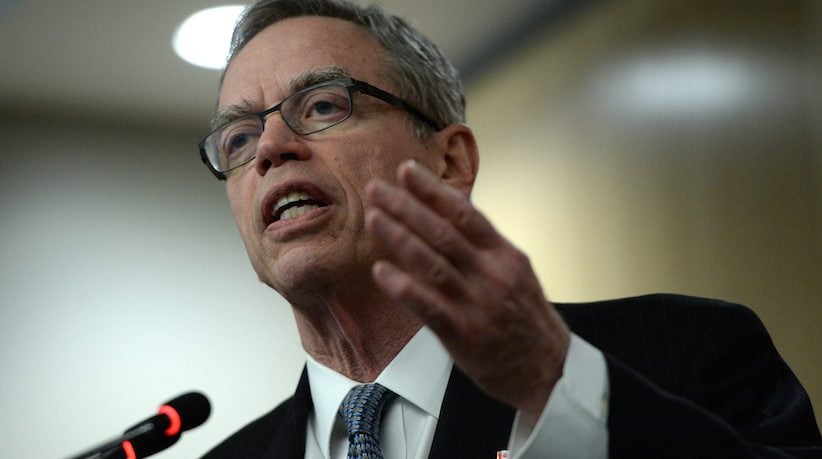Stuff Joe Oliver says
Here’s how the numbers stack up against some of Joe Oliver’s soundbites from his recent speech on balanced budgets
Share

Five years ago, Justin Halpern started a Twitter account based on quotes from his dad. Some of the quotes were weird. Some were disarming. Some were really funny.
I know Finance Minister Joe Oliver hasn’t been hailed as the government’s best communicator. I kind of think there’s something about his deadpan delivery… Also, he hasn’t been unwilling to make a grandiloquent statement for the government.
Minister Oliver recently used a speech in front of a Toronto business crowd to announce new balanced budget legislation. You can read about it here, here, and here.
Minister Oliver used the speech to say a lot of things. Inspired by Halpern, here I offer a some pull-quotes from the minister’s speech (which you can read in its entirety here). I also offer a few charts to look at with the quotes.
Decide for yourself what you see.
“Between 1969 and 1979, federal spending tripled”
Figure 1: Federal total program spending and total federal spending, FY 1968-69 to FY 1978-79
Figure 2: Federal total program spending and total federal spending, FY 1966-67 to FY 2013-14 (% of GDP)
“The personal federal tax burden is at its lowest in over 50 years.”
Figure 3: Federal revenues from personal income taxes, as a % of GDP
Figure 4: Federal revenues from personal income taxes as a share of total federal revenues.
“Chrétien responded to a deficit crisis by hiking taxes.”
Figure 5: Federal personal income tax structure, selected years, 1985 to 2014.
“[Our predecessors in office introduced] some of the biggest tax hikes in Canada’s history, accompanied by unprecedented cuts to programs and transfers.”
Figure 6: Provincial own source and transfer revenues (% of GDP)
“Services like public health care, at the core of what it means to be Canadian, faced a terrible crisis.”
Figure 7: Selected health care indicators, 1990s to present